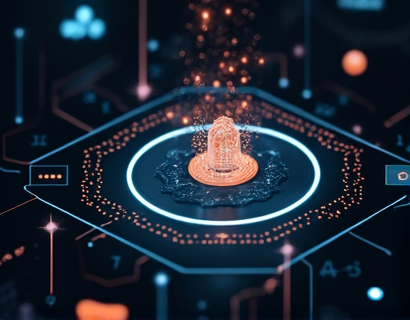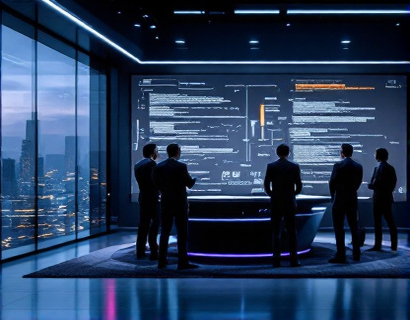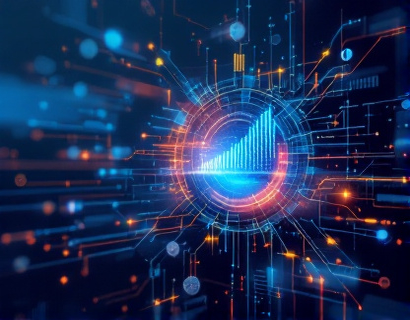Revolutionizing Astronomy Education: The Power of AI-Driven Personalized Learning
In recent years, the field of astronomy education has witnessed a significant transformation, thanks to the integration of artificial intelligence and personalized learning technologies. This shift has opened new avenues for students and enthusiasts to explore the cosmos in a more engaging, interactive, and tailored manner. The advent of AI-powered platforms has made it possible to delve deeper into the universe's mysteries, providing access to expert insights and interactive resources that were previously out of reach for the average learner.
The traditional methods of astronomy education, while foundational, often struggle to cater to the diverse learning needs and paces of individual students. With the introduction of AI-driven tools, the educational landscape is evolving to offer a more dynamic and personalized experience. These platforms utilize advanced algorithms to analyze a user's knowledge level, learning style, and interests, thereby curating a customized learning path that enhances understanding and retention of complex astronomical concepts.
Personalized Learning Paths
One of the most significant advantages of AI-powered personalized learning in astronomy is the ability to create tailored learning paths for each user. By assessing the individual's current knowledge and identifying gaps, the system can recommend specific topics, resources, and exercises to fill those gaps. This approach ensures that learners are always challenged appropriately, neither bored by material they already understand nor overwhelmed by concepts that are too advanced.
The AI agent continuously monitors the user's progress, adjusting the difficulty and focus of the content in real-time. For instance, if a student is struggling with understanding the phases of the moon, the system might provide additional simulations, videos, and interactive quizzes to reinforce the concept. Conversely, for a user who has mastered basic celestial mechanics, the platform can introduce more advanced topics such as exoplanet atmospheres or gravitational waves.
Interactive Exploration Tools
Interactivity is a cornerstone of AI-driven astronomy education. Traditional textbooks and lectures can only so much to bring the cosmos to life. AI-powered platforms offer immersive, interactive tools that allow users to explore the universe in a hands-on manner. Virtual reality (VR) and augmented reality (AR) technologies, powered by AI, enable learners to visualize celestial bodies, navigate through the solar system, and even simulate space missions.
For example, a student can use an AI-driven VR application to stand on the surface of Mars, observe the Martian landscape, and learn about the geological features and potential for past water. Such experiences not only make learning more engaging but also help in building a deeper intuitive understanding of astronomical concepts. Interactive simulations of planetary orbits, stellar evolution, and galaxy formation provide a dynamic way to grasp complex processes that would be difficult to visualize through static images or text alone.
Expert Insights and Community Engagement
AI-powered platforms do more than just provide personalized content; they also connect learners with a community of fellow astronomy enthusiasts and experts. This community aspect is crucial for fostering a collaborative learning environment where students can ask questions, share discoveries, and gain insights from others with similar interests.
Through integrated forums, chat features, and live Q&A sessions with professional astronomers, users can gain access to expert knowledge that enriches their learning experience. These interactions can lead to mentorship opportunities, research collaborations, and even career guidance. The AI agent can facilitate these connections by matching users with experts based on their specific interests and learning goals.
Moreover, the platform can curate content from leading astronomers and institutions, ensuring that learners have access to the latest research and discoveries. This keeps the educational material up-to-date and relevant, which is particularly important in a field as dynamic as astronomy. Users can follow the work of their favorite scientists, participate in citizen science projects, and contribute to real-world research endeavors.
Enhanced Understanding Through Adaptive Learning
Adaptive learning, a key feature of AI-driven personalized education, plays a pivotal role in deepening understanding. By analyzing user interactions and performance data, the AI can identify areas where a learner may be struggling and adjust the teaching approach accordingly. This might involve providing more detailed explanations, different examples, or alternative problem types to reinforce the concept.
For instance, if a student is having trouble with the concept of dark matter, the AI can detect this and offer additional resources such as animated explanations, interactive diagrams, and comparative analyses with visible matter. The system can also track the student's progress over time, ensuring that the learning is not only personalized but also progressive, building on previously acquired knowledge.
Gamification and Motivation
To further enhance engagement and motivation, AI-powered astronomy education platforms often incorporate gamification elements. These can include earning badges for completing modules, participating in quizzes, or contributing to community discussions. Leaderboards and achievement tracks can foster a sense of competition and accomplishment, encouraging users to continue their learning journey.
Gamified elements also make the learning process more enjoyable and less daunting. For example, a user might earn a "Galaxy Explorer" badge after successfully navigating through a virtual galaxy and answering related questions correctly. Such rewards not only provide immediate feedback but also create a sense of progression and mastery.
Accessibility and Inclusivity
One of the most compelling aspects of AI-driven personalized learning is its potential to make astronomy education more accessible and inclusive. Traditional educational resources can be expensive and geographically limited, but AI-powered platforms can democratize access to high-quality astronomy content. Users from various backgrounds and locations can benefit from the same advanced tools and expert insights, breaking down barriers to learning.
Additionally, AI can adapt content to accommodate different learning preferences and abilities. For instance, visual learners can benefit from detailed images and videos, while kinesthetic learners can engage with interactive simulations. The platform can also offer content in multiple languages and provide text-to-speech options for users with visual impairments, ensuring that everyone has the opportunity to explore the wonders of the universe.
Continuous Improvement and Innovation
The beauty of AI-driven personalized learning lies in its ability to continuously improve and innovate. As more users interact with the platform, the AI collects valuable data that can be used to refine and enhance the learning experience. Machine learning algorithms can identify patterns in user behavior, pinpoint effective teaching methods, and suggest new features or content improvements.
This iterative process ensures that the platform remains at the forefront of educational technology, always striving to provide the most effective and engaging learning tools. Users can benefit from these advancements without the need for manual updates, as the AI system evolves autonomously based on collective user data.
Conclusion
The integration of AI in astronomy education represents a paradigm shift, offering a personalized, interactive, and expert-enhanced learning experience that was previously unimaginable. By leveraging the power of AI, students and enthusiasts can explore the cosmos with unparalleled depth and clarity, overcoming traditional educational limitations and unlocking a deeper passion for the stars.
As this technology continues to advance, the future of astronomy education looks brighter than ever. The combination of personalized learning, interactive exploration, and expert insights creates a comprehensive and engaging educational ecosystem that empowers learners to reach new heights in their understanding of the universe.











































